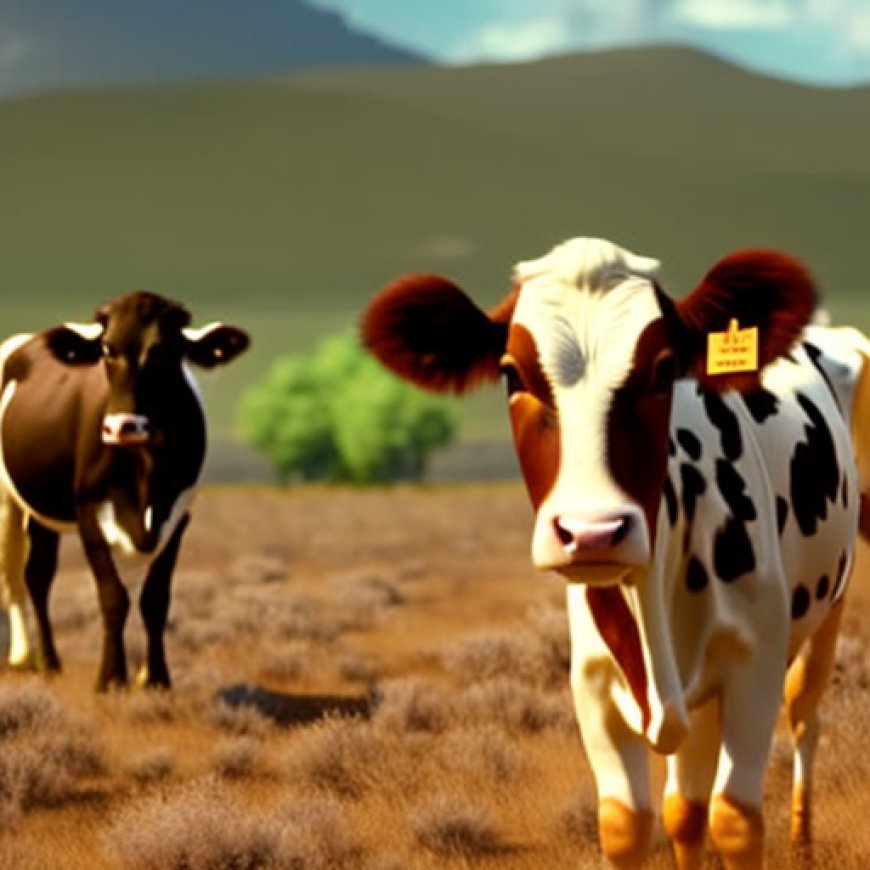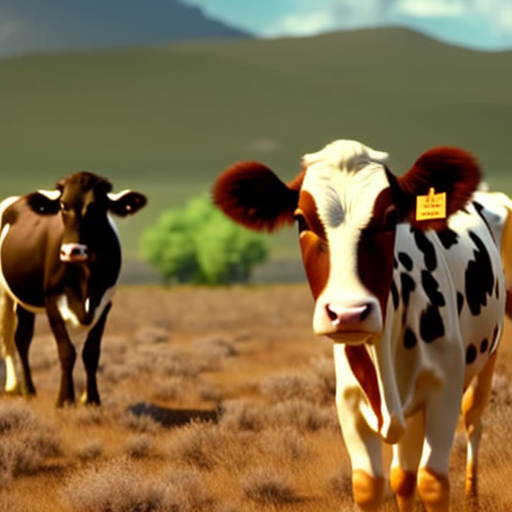Lawsuit Challenges National Forest Policies Favoring Cows Over Endangered Species in Arizona
Lawsuit Challenges National Forest Policies Favoring Cows Over ... Center for Biological Diversity


TUCSON, Ariz. – Lawsuit Challenges Cattle Grazing Policies in Coronado National Forest

The Center for Biological Diversity and Maricopa Audubon have filed a lawsuit against the U.S. Forest Service and the U.S. Fish and Wildlife Service to challenge policies that prioritize cattle grazing over the protection of endangered species and native wildlife in the Coronado National Forest in Arizona.
Concerns over Endangered Species and Fragile Streams
- Field surveys conducted by the Center for Biological Diversity have revealed extensive damage caused by cattle grazing in the streamside habitats of the Coronado National Forest.
- These habitats include critical areas designated for threatened yellow-billed cuckoos and other rare wildlife.
According to Robin Silver, a Center cofounder, the surveys conducted along 114 miles of streams in the Coronado National Forest have shown a significant decline in young trees, which are essential for stream health and wildlife. The destructive effects of widespread cattle grazing pose a serious threat to these fragile watersheds and the endangered species that depend on them. The current grazing management scheme implemented by the Forest Service prioritizes cows over endangered wildlife, indicating a failure to meet the requirements of the Endangered Species Act.
Challenges to Grazing Policies
- The lawsuit argues that the Forest Service’s management scheme, which relies on grazing metrics instead of fencing, has resulted in the widespread destruction of designated riparian critical habitat in the Coronado National Forest.
- This approach differs from other forests that use fencing to keep cows away from streams.
- The lawsuit claims that this practice has failed to protect threatened and endangered species, thereby violating the Endangered Species Act.
Charles Babbitt, President of Maricopa Audubon, emphasizes the need to prioritize the health of desert streams and endangered songbirds over cattle grazing. He highlights the detrimental impact of livestock grazing on climate change and drought, stating that controlling livestock impacts is a critical step within our control.
Conflicting Recommendations
- The Forest Service’s policies contradict recommendations from endangered species experts within the Fish and Wildlife Service, who have advised against grazing in riparian habitats where cuckoos breed.
- One scientist argues that while climate change cannot be controlled, the impacts of livestock grazing, such as trampling, erosion, and soil compaction, can be managed.
The Coronado National Forest, divided into five ranger districts, is home to numerous sky island mountain ranges and over 400 species of birds, including those found exclusively in the United States.
Threatened and Endangered Species
- In addition to yellow-billed cuckoos, other threatened and endangered species in the area include northern Mexican garter snakes, Chiricahua leopard frogs, Sonoran tiger salamanders, Gila topminnow, and Sonora chub.
Livestock grazing in the desert Southwest has been identified as the primary driver of riparian ecosystem degradation, negatively impacting threatened and endangered wildlife. Removing livestock from riparian areas is considered crucial for adapting to climate change.
SDGs, Targets, and Indicators in the Article
1. Which SDGs are addressed or connected to the issues highlighted in the article?
- SDG 15: Life on Land – Protect, restore, and promote sustainable use of terrestrial ecosystems, sustainably manage forests, combat desertification, and halt and reverse land degradation and halt biodiversity loss.
- SDG 13: Climate Action – Take urgent action to combat climate change and its impacts.
2. What specific targets under those SDGs can be identified based on the article’s content?
- Target 15.1: By 2020, ensure the conservation, restoration, and sustainable use of terrestrial and inland freshwater ecosystems and their services, in particular forests, wetlands, mountains, and drylands, in line with obligations under international agreements.
- Target 15.5: Take urgent and significant action to reduce the degradation of natural habitats, halt the loss of biodiversity, and protect and prevent the extinction of threatened species.
- Target 13.1: Strengthen resilience and adaptive capacity to climate-related hazards and natural disasters in all countries.
3. Are there any indicators mentioned or implied in the article that can be used to measure progress towards the identified targets?
- Indicator for Target 15.1: Percentage of terrestrial and inland freshwater ecosystems that are conserved, restored, and sustainably used.
- Indicator for Target 15.5: Extent of species threatened with extinction that are included on the IUCN Red List.
- Indicator for Target 13.1: Number of countries that have integrated mitigation, adaptation, impact reduction, and early warning into their national policies, strategies, and planning.
SDGs, Targets, and Indicators Table
| SDGs | Targets | Indicators |
|---|---|---|
| SDG 15: Life on Land | Target 15.1: By 2020, ensure the conservation, restoration, and sustainable use of terrestrial and inland freshwater ecosystems and their services, in particular forests, wetlands, mountains, and drylands, in line with obligations under international agreements. | Percentage of terrestrial and inland freshwater ecosystems that are conserved, restored, and sustainably used. |
| SDG 15: Life on Land | Target 15.5: Take urgent and significant action to reduce the degradation of natural habitats, halt the loss of biodiversity, and protect and prevent the extinction of threatened species. | Extent of species threatened with extinction that are included on the IUCN Red List. |
| SDG 13: Climate Action | Target 13.1: Strengthen resilience and adaptive capacity to climate-related hazards and natural disasters in all countries. | Number of countries that have integrated mitigation, adaptation, impact reduction, and early warning into their national policies, strategies, and planning. |
Behold! This splendid article springs forth from the wellspring of knowledge, shaped by a wondrous proprietary AI technology that delved into a vast ocean of data, illuminating the path towards the Sustainable Development Goals. Remember that all rights are reserved by SDG Investors LLC, empowering us to champion progress together.
Source: biologicaldiversity.org

Join us, as fellow seekers of change, on a transformative journey at https://sdgtalks.ai/welcome, where you can become a member and actively contribute to shaping a brighter future.







